Get To Know Smokey Bear
Smokey’s Story
For more than 80 years, Smokey Bear has taught generations of Americans about the importance of wildfire prevention. Smokey's powerful message, “Only you can prevent wildfires” is at the heart of the longest-running public service advertising campaign in U.S. history.
Despite the leading causes of wildfires evolving over time, from cigarettes and matches to campfires and vehicles, Smokey’s message has remained the same and is just as relevant and urgent today as it's ever been.
He is also one of the world’s most recognizable characters and an American cultural icon. Smokey has traveled to the International Space Station, is friends with some of the biggest stars, and has paraded through Manhattan as part of the Macy’s Thanksgiving Day Parade. He can also be seen on stamps, posters, trading cards, and license plates.
But he’s more than just an icon. In the 1950s, when an orphan bear cub with severe burns was rescued from a wildfire, he became the living symbol of Smokey Bear. His story further inspired Americans to do their part in preventing wildfires and protecting our nation's beautiful wildlands.
A nostalgic reminder of childhood and beloved by all — from children to grandparents and everyone in between — let’s take a look at some of the highlights of Smokey Bear’s life.
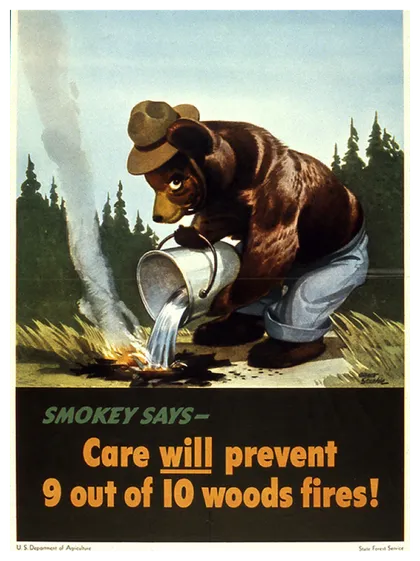
The Smokey Bear PSA Campaign
The USDA Forest Service, National Association of State Foresters, and the Ad Council partnered with advertising agency Foote, Cone & Belding (FCB) to create the Smokey Bear campaign in 1944. To this day, FCB continues to partner with the Smokey Bear campaign to create new public service announcements (PSAs) on a pro-bono basis.
Artist Albert Staehle delivered the first poster featuring Smokey Bear (featured here).
His signature phrase “Remember... Only YOU Can Prevent Forest Fires” was not introduced until 3 years later in 1947.
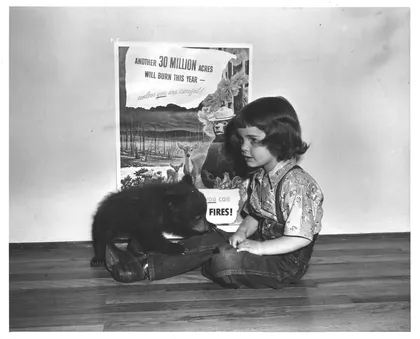
An Orphan Cub Named Smokey
In 1950, crews battling a wildfire in the Capitan Mountains of New Mexico, found and rescued an injured bear cub during their mission. They named the cub “Smokey” after the famous campaign icon. The cub would go on to become the living symbol of Smokey Bear.
Smokey the cub was moved to the National Zoo in Washington, D.C., where he lived the rest of his life as one of the zoo’s most popular exhibits. He is buried at the Smokey Bear Historical Park in Capitan, New Mexico, where he continues to be a wildfire prevention legend.
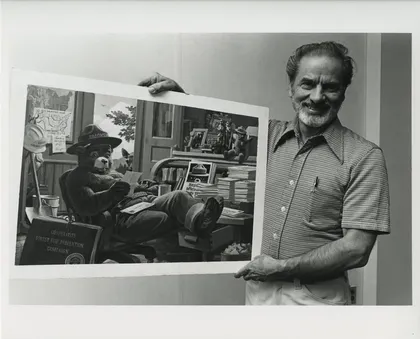
Wendelin begins illustrating Smokey Bear
While he wasn’t the first to draw Smokey, Rudolph “Rudy” Wendelin did create some of the most well-recognized depictions of Smokey to-date. He was the mastermind behind Smokey Bear’s signature ranger hat and blue jeans.
Rudy worked for the USDA Forest Service as an illustrator for many years. He served as Smokey Bear’s art consultant and “chief caretaker” from 1946 until his retirement in 1973.
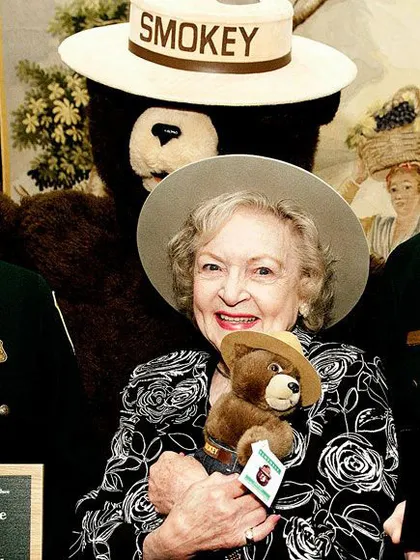
Smokey’s Famous Friends
Many celebrities and athletes have lent their voices and talents to the Smokey Bear campaign through the years, including Bing Crosby, Roy Rogers, Betty White (pictured), Dolly Parton, Leonard Nimoy, Ray Charles, Joe Montana, and Brian Tyree Henry. The Beach Boys even quote Smokey Bear in their song "Drive-In."
Smokey Bear goes on to visit the White House and meet nearly all U.S. presidents throughout the decades, even appearing at several White House Easter Egg Roll events.
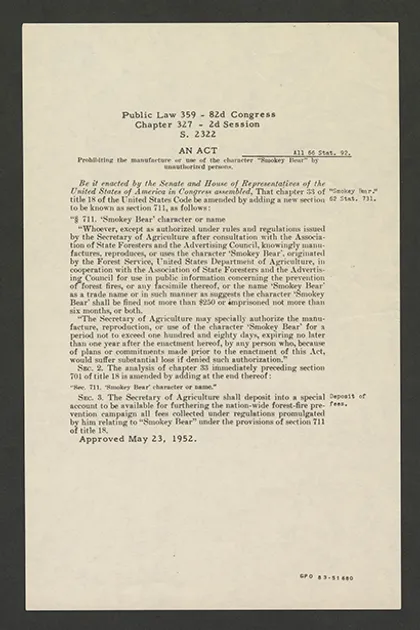
Smokey Bear Act
Congress passed the “Smokey Bear Act” in 1952 to remove Smokey from the public domain and place him under the control of the Secretary of Agriculture. The act established a fine against any unauthorized persons using Smokey’s name or character.
It also allows for all official royalties and fees collected off licensed Smokey products to be used for continued wildfire prevention education.

Smokey Bear Awards
Established in 1957, the national Smokey Bear Awards recognizes organizations and individuals for their outstanding service, in preventing human-caused wildfires and increasing awareness of the need to continue wildfire prevention efforts.
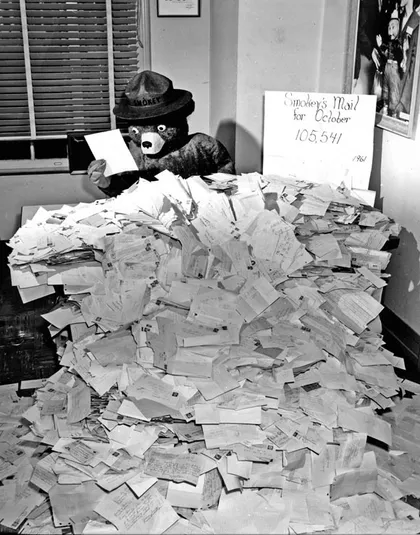
Smokey’s Own Zip Code: 20252
Over the years, hundreds of thousands of letters have landed on Smokey’s desk. He’s so popular that, in 1964, he was awarded one of only two personalized zip codes — the other is for the U.S. president.
You can still write Smokey Bear a letter at:
Smokey Bear
Washington, D.C. 20252
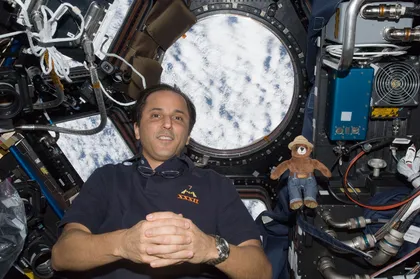
Smokey Goes to Space
On May 15, 2012, Smokey Bear traveled to the International Space Station (ISS) aboard the Soyuz spacecraft with NASA astronaut Joe Acaba and Russian cosmonauts.
Smokey spent 123 days aboard the ISS as the flight mascot and light-hearted zero-gravity indicator before returning in September. Acaba’s friend Jeffrey Miller, who worked at the USDA Forest Service, gave him the plush toy that made the journey.

Macy’s Thanksgiving Day Parade
The Smokey Bear balloon first appears in the Macy’s Thanksgiving Day parade in 1966. He has continued to make an appearance at the parade over the next several decades.
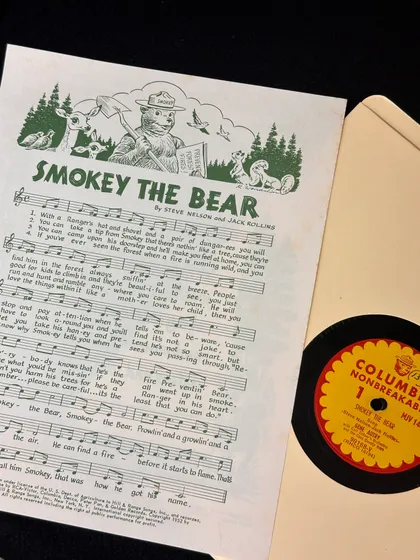
Smokey “the” Bear
In 1952, Steve Nelson and Jack Rollins wrote the popular anthem that would launch a continuous debate about Smokeyʼs name. To maintain the rhythm of the song, they added “theˮ between “Smokeyˮ and “Bear.ˮ
Due to the songʼs popularity, Smokey Bear has been called “Smokey the Bearˮ by many adoring fans, but, in actuality, his name never changed. Heʼs still Smokey Bear.

Smokey as a Cultural Icon
Shirts, hats, posters, pins — Smokey has been featured on all kinds of merchandise over the years.
For officially licensed Smokey Bear merchandise, look for the licensing logo and U.S. Code citation or visit:
- Official Smokey Bear Licensees and Products
- National Symbols Cache
- National Association of State Foresters Store
Proceeds from licensing fees go to the Smokey Bear campaign, to be used for continued wildfire prevention education.
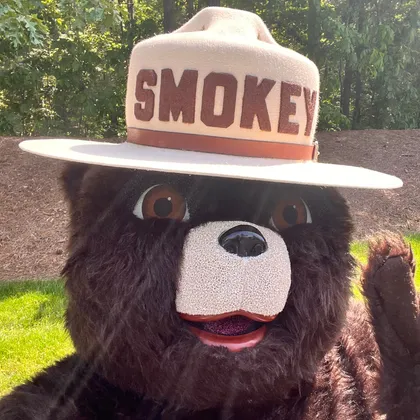
Smokey Bear finds his voice on social media
Smokey first joined Facebook on June 3, 2008. Smokey can now be found on Instagram, YouTube, Facebook, and X, where he continues to connect with his fans and followers and share wildfire prevention tips.
Smokey’s followers also revel in this opportunity to connect, sharing photos of DIY costumes, decorating Smokey-themed cakes, getting Smokey tattoos, and sharing an overall appreciation and love for this icon.
Get to know Smokey Bear
Since 1944, Smokey’s been working hard to inspire Americans to prevent wildfires. Follow his history here through memorabilia and print, radio and TV messages.